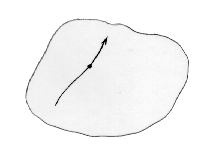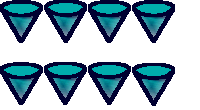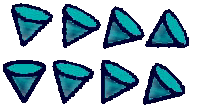
| Home |

|
PREFACE | PRIMEVAL | SPECIAL | GENERAL | CONCLUSION |
| Dictionary | Introduction | Quotations | Dictionary | . |
These documents comprise an elementary introduction to the Theory of Relativity. The intended audience is a class of nonscience undergraduates in (PHY 105) Science for the 21st Century a course offered by the Department of Physics at Syracuse University. (Eventually, these documents will be expanded to include more technical explanations for more advanced audiences.)
Admittedly, this is an ambitious plan to explain the Theory of Relativity in three one-hour lectures. Comments and criticisms are welcome. Rob Salgado
 The Theory of Relativity is really a physical theory about time and space.
In fact, it actually says that there is no such thing as time
and there is no such thing as space.
Instead, it is a theory of "a new thing called Spacetime".
Spacetime is the history of an entire universe, that is,
the set of all of the events that happened in that universe.
The Theory of Relativity is really a physical theory about time and space.
In fact, it actually says that there is no such thing as time
and there is no such thing as space.
Instead, it is a theory of "a new thing called Spacetime".
Spacetime is the history of an entire universe, that is,
the set of all of the events that happened in that universe.
Our plan is to follow a pseudo-historical development of how we came to understand "Spacetime", the spacetime of General Relativity. We do so by considering a sequence of models for spacetime. Each model represents "how we understood space and time" at various stages in our human history. Specifically, we will consider:
How is the nature of space and of time to be viewed? |
|---|
"Absolutely" ("Universally", "Publicly")
|
Throughout, I will be exercising the use of my poetic license.
At the root of Einstein's Spacetime is a particular causal structure. Unfortunately, the nature of the causal structure of Spacetime and its (experimentally verified) consequences are often beyond our everyday experience. Hence, it may appear quite counterintuitive. This is the source of much of the confusion in this subject.
 The Light Cone is a mathematical model that very neatly encodes
this causal structure of Einstein's Spacetime.
Each event in Spacetime has a double-cone
attached to it, where the vertex (i.e., the tip) corresponds to the event
itself.
By convention, "time" runs vertically in all of our diagrams.
The upward-directed cone opens to enclose the directions
pointing towards events to the future of this event.
The downward-directed cone directions pointing towards events to the
past of this event.
The Light Cone is a mathematical model that very neatly encodes
this causal structure of Einstein's Spacetime.
Each event in Spacetime has a double-cone
attached to it, where the vertex (i.e., the tip) corresponds to the event
itself.
By convention, "time" runs vertically in all of our diagrams.
The upward-directed cone opens to enclose the directions
pointing towards events to the future of this event.
The downward-directed cone directions pointing towards events to the
past of this event.
In my opinion, understanding the Light Cone is an important first step
towards understanding the Theory of Relativity.
(Some mathematics is a necessary crutch to clarify and correct
our physical intuition.)
 If the Light Cones are arranged in
a neat grid in a uniform manner,
we say that "Spacetime is flat".
The spacetime of Special Relativity is a flat spacetime.
If the Light Cones are arranged in
a neat grid in a uniform manner,
we say that "Spacetime is flat".
The spacetime of Special Relativity is a flat spacetime.
 If the Light Cones are arranged in a non-uniform manner,
we say that "Spacetime is curved".
The spacetime of General Relativity is generally a curved spacetime.
If the Light Cones are arranged in a non-uniform manner,
we say that "Spacetime is curved".
The spacetime of General Relativity is generally a curved spacetime.
Einstein's Theory of Gravity relates the curvature of Spacetime to the presence of matter. As an interesting example, we will consider the Spacetime around a Black Hole.
 Some words of wisdom.
Some words of wisdom.
 PHY 105: Let's begin.
PHY 105: Let's begin.
Of course, I am solely responsible for any errors in the contents of these documents.
Here are my references for the Light Cone
 Now, let's begin.
Now, let's begin.
| Home |

|
PREFACE | PRIMEVAL | SPECIAL | GENERAL | CONCLUSION |
| Dictionary | Introduction | Quotations | Dictionary | . |